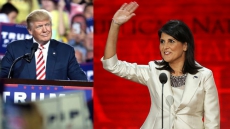India remains one of the fastest-growing countries in the world, the White House today said even as it underlined that inefficiencies remain in the public sector of the country with the poor population still lacking healthcare coverage and access to financial services.
"India remains one of the fastest-growing countries in the world, with real GDP expanding at 7.3 per cent in the four quarters through 2016:Q3," said the Economic Report of the President for the year 2017, which was sent to the Congress.
The voluminous report running into nearly 600 pages says that economic growth in India continues at a solid pace of a projected 7.4 per cent over the four quarters of 2016.
"Private consumption has been a major driver in economic growth, contributing 4.3 percentage points to its 7.3 per cent real GDP growth rate in the four quarters through 2016:Q3," the report said, adding that lower inflation and fiscal consolidation over the past year has created additional policy space for India to stimulate growth should a crisis occur.

"Macroeconomic risks revolve around inflationary pressure stemming from increasing commodity prices, which could weigh on the current account and fiscal deficit," it said.
"Inefficiencies remain in the public sector, with India's poor still lacking healthcare coverage, educational attainment, and access to financial services. Further, inequality in India remains high," the White House report said.
The report also noted the countries that export to China and the advanced economies have suffered due to the slowdown in those important markets, the report added.
"Economic growth in China has been on a downward trend since a brief rebound after the global financial crisis. China has been attempting to re-balance from an investment- and export-driven economy to an economy driven more by private consumption," it said.
The White House said as China's economy grew to 15 per cent of global GDP in 2015, targeted industrial policies have made it the world's largest manufacturer and the dominant producer of some key goods in the global marketplace, as well as a major source of demand for an array of goods, magnifying the effects of changes in its domestic economy on global prices and growth.

According to the report, more recently, China may be postponing its longer-term goal of rebalancing in order to stabilise growth in the near term after growth fell from 7.2 per cent in the four quarters ended in 2014:Q4 to 6.7 per cent in the four quarters ended in 2016:Q3.
In 2016, credit growth has been rapid, increasing financial risks, with credit to the non-financial sector as a percent of GDP now exceeding that of major emerging market economies, real estate prices hitting record highs, and distressed bank assets rising, it said.
"Against this backdrop, the Chinese renminbi (RMB) has been gradually depreciating since mid-2015 against both the dollar and a weighted basket of currencies," it said.




